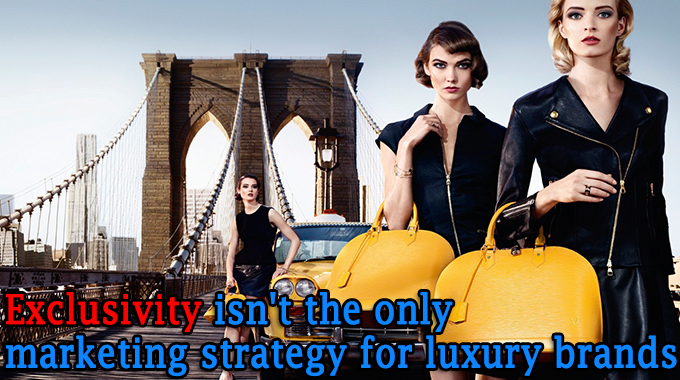Exclusivity isn’t the only marketing strategy for luxury brands

It’s a good time to be in luxury car sales. February car sales took flight, to a 15-year high for the month, while SUVs and luxury cars dominated this month’s New York Auto Show, according to the German broadcaster Deutsche Welle. What’s more, we know that when auto sales improve, the economy overall — and therefore the luxury economy — is improving, too. American consumers are once again ready for luxury marketing.
Yet, if you’re entering the luxury marketplace, you need a solid strategy in place. Without one, you can’t offer the quality of products or services consumers expect from luxury brands.
When you do put that strategy together, you need to understand that luxurymeans different things to different people. For some, the term is associated with high price. It’s also associated with exclusivity. But those who truly appreciate luxury assign other characteristics, as well.
Take Mercedes-Benz: Do people buy Mercedes cars just because of their price tags? Do they buy them just for their status? While some consumers may do exactly that, the majority of consumers buy Mercedes for safety ratings, advanced performance, service support and testing standards.
In fact, luxury without intrinsic value is often short-lived. People are rational beings, and logic ultimately rules the day. So, while an expensive luxury item may be “in,” that’s all it will be if it doesn’t provide the purchaser with long-lasting value.
That brings us back to the need for a solid strategy when you enter the luxury marketplace. Without one, you can’t offer the quality expected, and you also may find yourself making compromises for the sake of business — and that’s unwise, because compromises rarely align with a company’s vision.
So what, exactly, should you consider when developing your luxury strategy?
1. Define your unique value.
A luxury strategy must focus on the unique value of a product or service. But unique value doesn’t necessarily need to be meaningful to all consumers. Only those in your niche market must find it appealing. Otherwise, they won’t pay premiums for that value proposition.
In fact, the top 2 percent of your customers are often responsible for 20 percent of your sales. They’re also responsible for bringing in 80 percent of your business by word of mouth and recommendations. Understanding how a product’s unique value plays into the buying decisions of those 2 percent is crucial.
2. Don’t mix your message.
If difficulties arise in selling your product or service at a premium price, either the value you’re providing isn’t justified or the messaging isn’t hitting the mark. In my experience, consumers must believe that you can deliver on the value of that premium price, so the message you convey is a large part of attracting your ideal customers.
Even something seemingly simple — such as discounting prices to make sales — can muddy your message and corrupt your value proposition. Louis Vuitton, for example, never goes on sale. If you can sell a product or service at a lower price, are you ripping people off during other periods? People will start to question whether your goods are worth the time or money.
3. Paint a picture of your origin.
No matter the industry, every company got its start from somewhere, and it’s that foundational story that can establish your brand in the luxury space. Take Chanel: It propagates its origin story like no other brand. Emulate that company: Ask yourself who you are, where the idea for your product or service came from and why you got into business in the first place. Your origin can have an impact on potential customers.
Your story also has a way of starting relationships with consumers. They’re able to see how your products or services relate to their lives. Your brand becomes more relevant to them, and they’re more apt to make purchases. Never shy away from telling people where you came from.
Of course, some luxury strategies are going to focus on vanity or exclusivity. But those angles rarely stand the test of time. Instead, look at what your product or service uniquely brings to the luxury marketplace, and tailor your message (and price, of course) around it. Those moves could make the difference between your product becoming a passing fancy — or a heritage brand.
___
by RICHARD FERTIG

